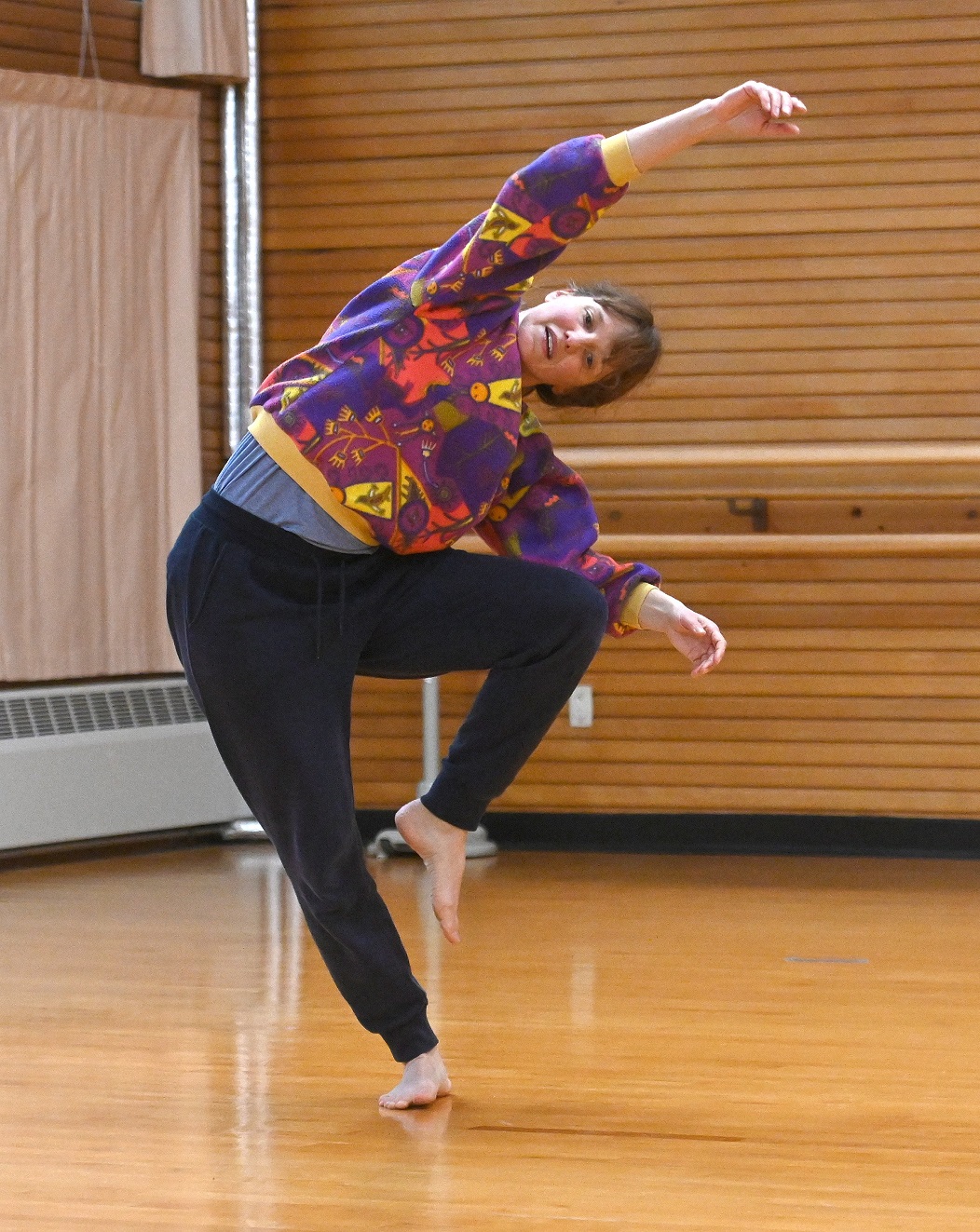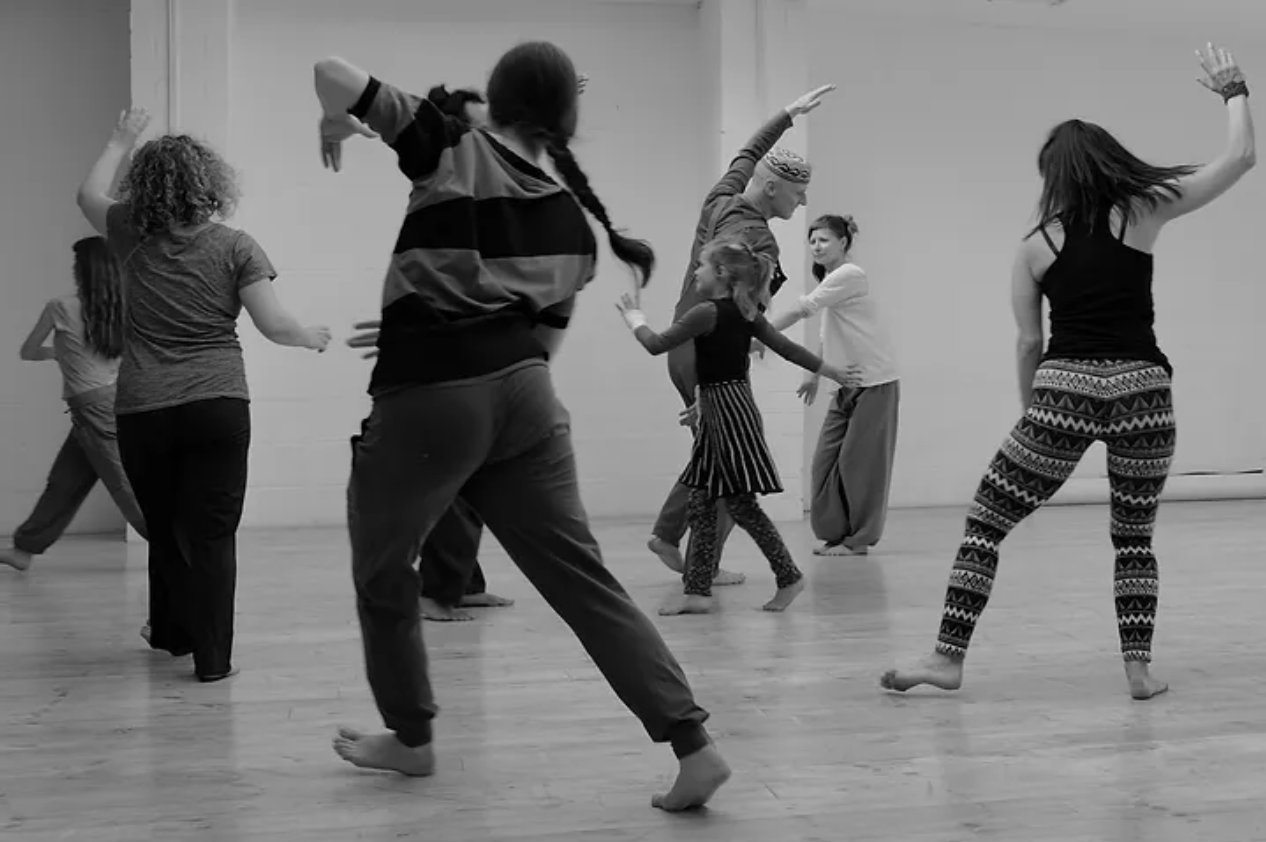
A Sabbatical in New Zealand sounded perfect to Marcela Giesche.
Feeling burnt out from her work as artistic director of her dance venue Lake Studios Berlin and all the responsibilities that entailed for the past 10 years, Giesche yearned to spend more time on her own artistic work.
"I teach, I choreograph, I curate festivals and I build things in my studio. It’s a job that requires everything; it’s so intense. I was tired. I needed a break."
As New Zealand is also an English-speaking country, she thought it could also provide her 5-year-old daughter the opportunity to experience another culture and grow up bilingual like she did. Giesche, whose parents are German and Czech, migrated to the United States when she was 4.
"I also wanted my daughter to be immersed in a second language from a young age and get this different perspective on the world. Language influences how we see things.
"Seeing one thing in two ways is quite inspiring to me as an artist, and also relates to my dance work."
Having decided Australia was too big, England was too close and the US was not an option, she began to research New Zealand with the idea of taking a year out. As she had grown up in the university town Alfred, New York, she decided to look for a similar situation in New Zealand.
"My dad was a professor of chemistry so I was going for a university environment as it was familiar and cosy."
Reaching out through the internet to different universities, she finally connected with University of Otago dance programme convener Sofia Kalogeropoulou, who told her about Dunedin’s unique and tightly knit dance community.
Liking the sound of it, Giesche, who started dancing through ballet classes as a child and was introduced to modern dance at 16, started to look further into the city and university.
She came across a mention of the University of Otago Caroline Plummer Fellowship in Community Dance, which honours dancer and student Caroline Plummer who died of cancer at the age of 23 in 2003.

"It was a really nice feeling to have decided to have come to a place, and then have that place want you to come too. It was all very serendipitous."
Looking back now, she realised if she had come to Dunedin without the fellowship she would have had to leave after a month.
"It’s so expensive. We’re paying twice as much for our apartment here as we would be in Berlin. It’s very different here — so I am eternally grateful for the support of the fellowship, which enables my community work here."
Her proposal for the fellowship was to create a work called selfportrait24: Ōtepoti — Dunedin. Giesche, who chose dance as a career because of its unpredictability, has made the work before. Originally it was created for 24 professional dancers after she got an idea from an audition.
"We were asked with very limited movement vocabulary, just three or four different themes of movements, to create a very short solo to present ourselves in silence. There were dancers from all over the world there.
"It was so inspiring — you could see all these people with all these different experiences one after another. It was like a beautiful collection to me and I love collections in general, as a concept, because they highlight the connectedness and essence of related things."
Shortly after she was asked to fill in a slot in a theatre programme because a fellow collaborator could not get her visa to enter the country. She had to come up with an evening-length piece in less than a week. As a choreographer, she found setting specific movements to be "tedious", preferring rather to create frames for improvised and task-based structures — allowing for movement choices to emerge in the moment.
"I had this idea to present that situation from the audition as a choreography. It was a choice to present something that doesn’t need any rehearsal, because it’s already there and beautiful in the way it was. "
The professional dancers she invited from the Berlin community had no more than two minutes to perform their solo in silence and did not know what order they would perform in. Through this structure the transitions between them became part of the work and the performers as a group were responsible for ensuring each did not go over time to maintain the structure of the piece.
"To stop someone is generous. We’re all working together to keep that structure. "
Prior to the show, the dancers did intensive group and team-building workshops to get to know each other, feel comfortable and become connected.

As a result, instead of 24 solos it became a group piece which from night to night was different, as the dancers appeared in different orders and made different movement choices. What stayed the same was the white square each dancer performed in while the others sat around the outside.
"You know what kind of moves you will do, but you use those moves with different dynamics or different intentions or different musicality to communicate how things are in that moment. It is improvised but with set material. Each one has a flowering moment."
Having 24 performers also meant a very diverse audience as each dancer’s friends and family came to see their work.
"It’s a natural effect. It’s a community coming together, weaving together an even larger community."
It was also a great piece for people not used to seeing contemporary dance as they got to see many different types of movement in one go in a very minimal way, without the distraction of music or other scenic elements — allowing them to really feel the power of movement as its own form of expression.
She did not believe it was OK for audiences not to "get" a dance work.
"I think it’s our responsibility as artists to frame our work in a way that it is accessible from multiple levels.
"I’m not saying it has to be super simplistic, but there is a way to make work that you can frame in a way where people without a professional dance background can feel and connect with what is going on.
"It is a physical resonance with the bodies on stage to your own body — something that everyone has."
Giesche presented selfportrait24 again in her own dance space with 16 amateur performers from the community around Lake Studios Berlin, aged 10 to senior, plus eight professional dancers.
"It worked really well. I gave them the same group-building workshops and the same simple performance structure and they used that to express how they perceived that moment in time.

In Dunedin she planned to do the same, but instead of finding people from her immediate community, she wanted to extend that out to the entire city and find people from a wide range of backgrounds and different suburbs to represent the demographics of the city.
"It’s proving to be a bit challenging to be honest. I’m working on that. I’m going personally into different areas of the city and just talking to people."
She admitted it was sometimes not enough and was trying to find other ways of reaching people especially within the Māori and Pasifika communities.
"You don’t need any type of dance experience to join the piece. People will be using movements they know well from their daily lives to improvise and play with."
Part of her mission was to wipe out the concept that dance was somehow elite or new or needed particular skills. She was a big advocate of more movement in schools that did not involve sports and competition but was instead "movement for movement’s sake".
"People can be surprised by what the different parts of their bodies propose. It is important to let go and know that not all the movement is made in your head. You let your body explore the physical reality of the space."
While in Dunedin she is also doing specific workshops for different professional groups, children, and students from diverse fields of study at the university.
She is also hosting regular classes on Wednesday and Friday mornings which are open to anyone who wants to know more about themselves, the work, or is simply curious to get to know their own bodies better in movement.
"These have become the community workshops bit by bit. It’s so interesting. Each class is like an experiment for me as I don’t know who is going to be there and every person’s presence and background influence and form each class differently."
TO SEE
For more information: www.selfportrait24.info












